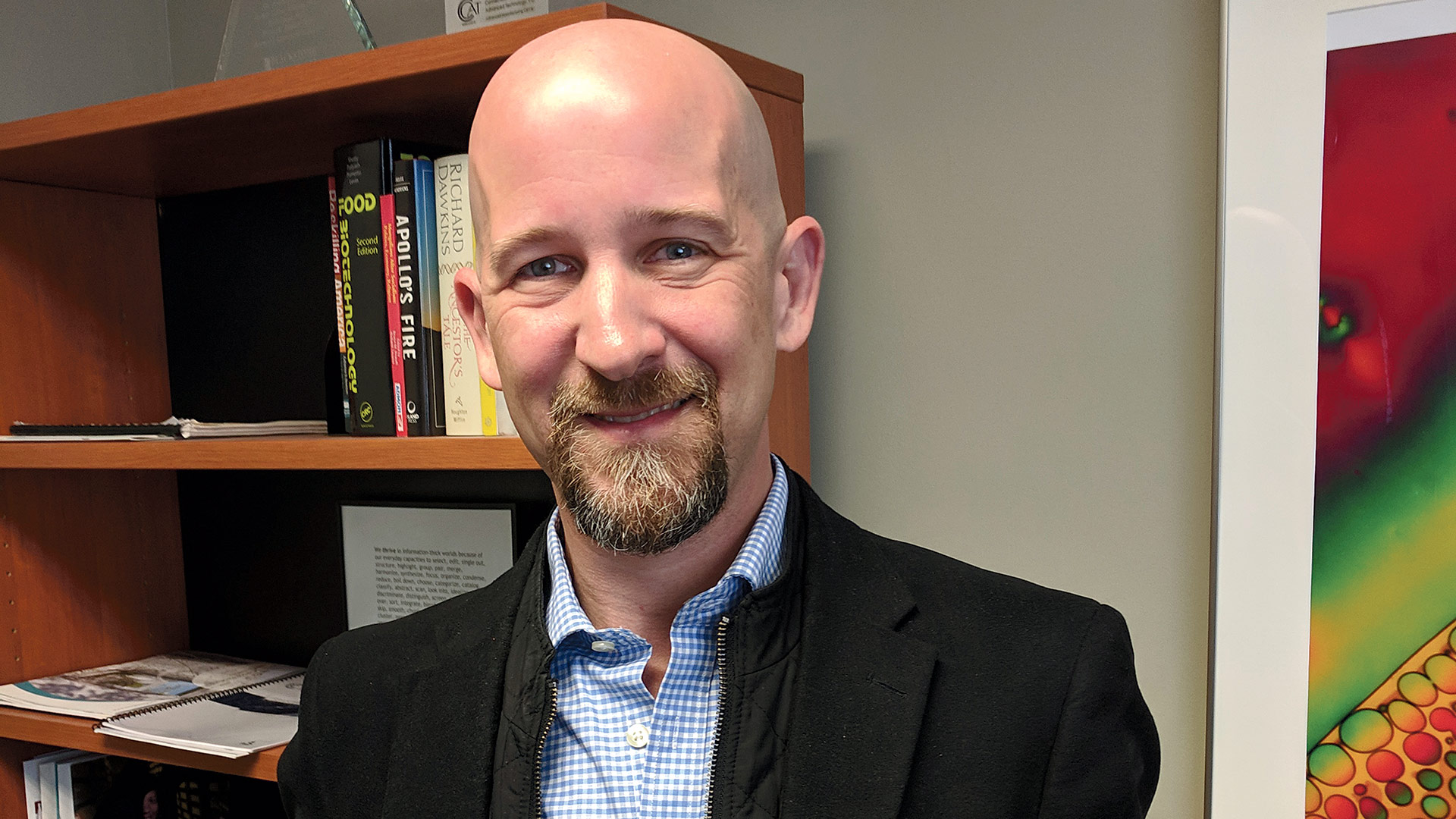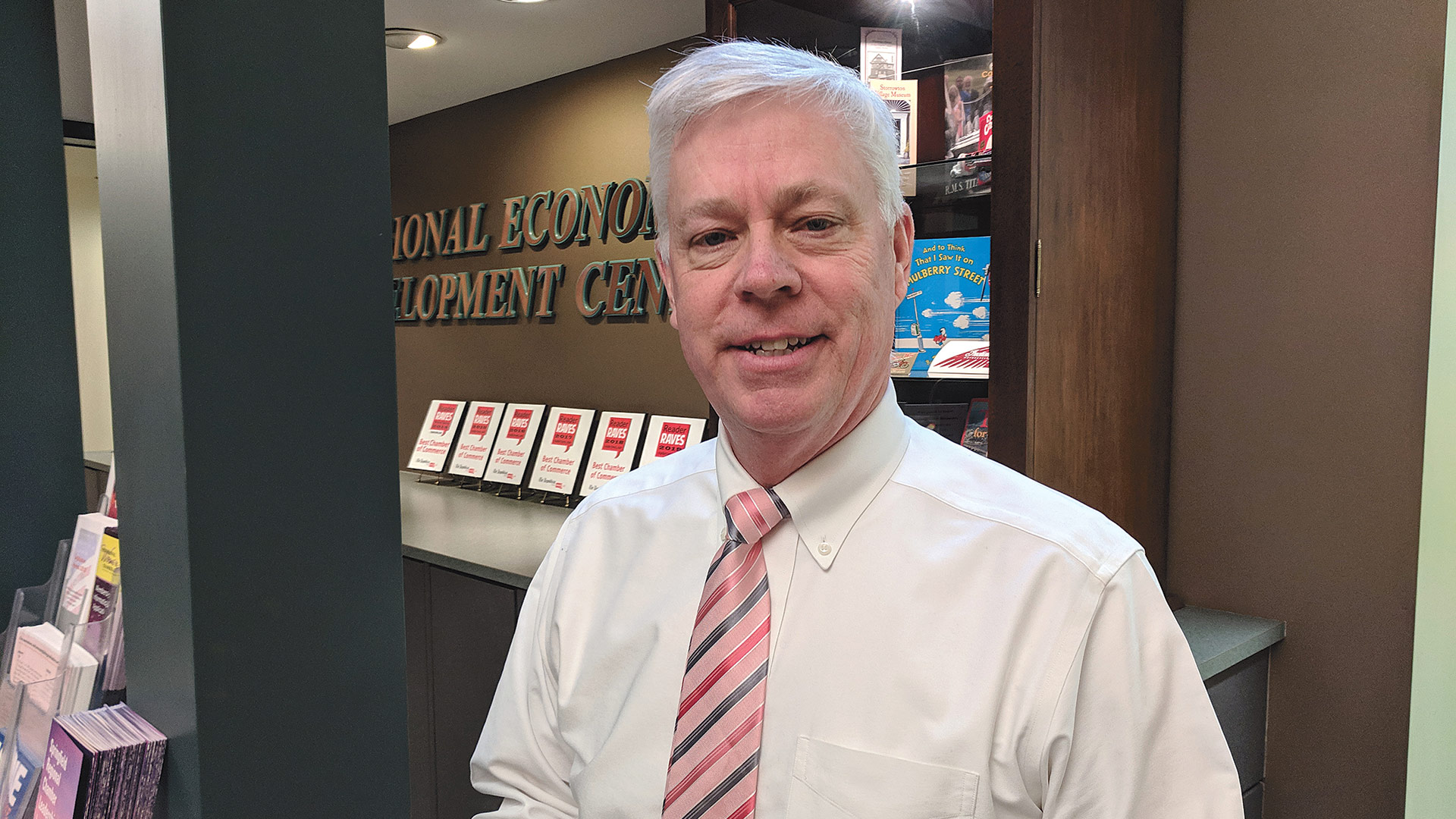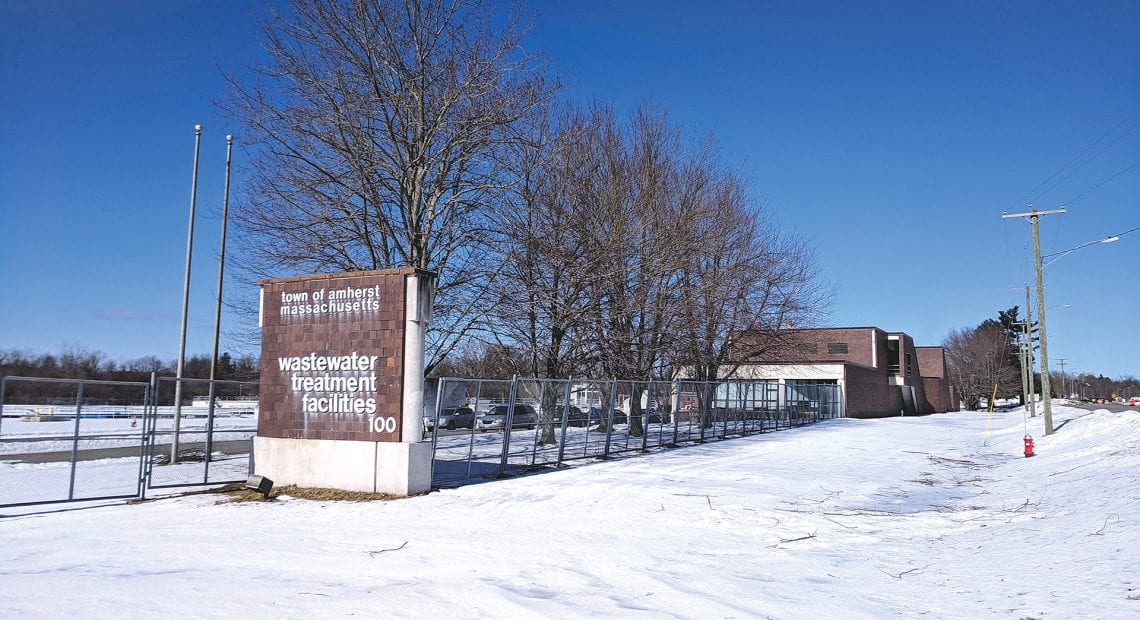Pipeline to Progress
 When the Massachusetts Clean Energy Center released a study last fall examining potential locations for water-technology demonstration centers in Massachusetts — thus raising the Bay State’s profile and potential in the increasingly critical field of water supply, treatment, and sustainability — UMass Amherst was a natural choice, because it’s been making connections between water research and industry for some time. A host of key stakeholders believe it can become even more so in the decades to come.
When the Massachusetts Clean Energy Center released a study last fall examining potential locations for water-technology demonstration centers in Massachusetts — thus raising the Bay State’s profile and potential in the increasingly critical field of water supply, treatment, and sustainability — UMass Amherst was a natural choice, because it’s been making connections between water research and industry for some time. A host of key stakeholders believe it can become even more so in the decades to come.
Talk to experts in the broad realm of water technology innovation, and it doesn’t take long for Israel to come up, at least in terms of government investment.
It’s not exactly by choice.
“There are countries facing severe water issues right now,” said Loren Walker, director of the Office of Research Development at UMass Amherst. “Israel is the world leader in terms of state-led efforts to purify water — because they have to. They have a real water-constraint situation there.”
But several entities in the Bay State — from the university to the Massachusetts Clean Energy Center (MassCEC) to a host of industry players, both established companies and startups — are intrigued by the potential to make Massachusetts an international leader in water innovation as well. And they’ve got plenty of progress to build on already.
“It’s obviously a big area — there’s a water crisis around the country, around the world, and it will be more critical as the years go on, so there’s a need to innovate ways to treat water, both wastewater and surface water,” Walker told BusinessWest.
“It’s an active area of university research, an active area of industrial research,” he went on, “but there’s a gap between the kind of research the universities do — federally funded, more basic or fundamental — and technologies being developed by industry that they can ultimately commercialize and sell. There’s a gap between that fundamental research and the later applied research where you’re prototyping, scaling up, and seeing what technologies really work — and that’s where you need a pilot site. You need a way to go from fundamental laboratory research to commercial-scale research.”
UMass could be that site, he said.

Loren Walker says the Amherst Wastewater Treatment plant provides UMass researchers and partnering companies a flow of wastewater on which to test new technologies.
Last fall, MassCEC released a comprehensive study that evaluates the technical and financial feasibility of three potential water-technology demonstration centers across Massachusetts, including one at UMass Amherst. Such centers, proponents say, could offer a test bed to pilot new water technologies and position Massachusetts as a global leader in the water-innovation and energy-efficiency sector, providing significant business and employment opportunities.
Rick Sullivan, president of the Western Mass. Economic Development Council, said one of the EDC’s goals is to help identify and develop sectors where Massachusetts could become a center of excellence. Back when he served as secretary of Energy and Environmental Affairs under then-Gov. Deval Patrick, he and the governor traveled to several locations, including Israel, to learn about water innovation, recognizing this was an issue of growing international concern.
“Water is just a really big issue, and becoming more important every day,” Sullivan said. “So we started asking, ‘can Massachusetts actually play in this water cluster?’ The short answer is, yes we can — because it’s already a multi-billion-dollar business in the Commonwealth.”
“It’s obviously a big area — there’s a water crisis around the country, around the world, and it will be more critical as the years go on.”
That figure includes everything from delivery systems to public-works projects; from filtering, purifying, and clarifying water to security of freshwater sources like the Quabbin Reservoir, he noted. “So it’s a bigger field than I think a lot of people realize.”
UMass Amherst has long been involved in water research. Then, in 2016, a $4.1 million grant from the U.S. Environmental Protection Agency — on the heels of a state earmark of $1.5 million from the state Department of Environmental Protection for water innovation — helped launch one of only two national research centers (the other is in Boulder, Colo.) focused on testing and demonstrating cutting-edge technologies for drinking-water systems.
All things considered, Sullivan said, UMass Amherst is an ideal spot to develop a demonstration center. A conference last October, called “Innovations and Opportunities in Water Technologies,” brought together the business and startup community, area municipal leaders who spoke about challenges to current water and wastewater systems, and UMass experts who detailed some of the cutting-edge work already being done on campus.
“At the end of the day, all of those panels and all the discussion and information kind of led back to reinforcing the idea that this is a really smart investment for the Commonwealth,” Sullivan said, noting that the investment to create the three centers was approved as part of the state’s 2014 environmental bond bill, but has not yet been appropriated in the state budget.
“When you talk to the companies that are in the innovation sector, one of the biggest needs they have is to be able to take their product and demonstrate that it works in real life — and to be able to do that not just in a lab, but out there in the real world,” he continued. “UMass has the ability to provide that infrastructure with some investment from the Commonwealth.”
In the Flow
The MassCEC study analyzed the technical and financial feasibility of three potential water-technology demonstration centers around the state: the so-called Wastewater Pilot Plant at UMass Amherst, the Massachusetts Alternative Septic System Test Center in Barnstable, and the Massachusetts Water Resources Authority’s Deer Island Treatment Plant in Boston Harbor.
Establishing this network could create jobs, lower energy costs, and optimize municipal operations in addition to supporting water-technology research, the study noted. A test-bed network could serve existing Massachusetts-based water technology companies, help attract new companies to the Commonwealth, advance new solutions to both local and global water challenges, and provide a strong foundation for innovation.
Key to UMass Amherst’s feasibility as a demonstration center is the fact that it already acts as a pilot site for industry — albeit on a limited basis — because of its access to flowing streams of municipal wastewater at the Amherst Wastewater Treatment Plant, located next to the university’s Water Energy Technology (WET) Center.
“You need flowing streams of municipal wastewater and surface water; you need to have access to this to test your filtration membrane or electrochemical treatment technologies, whatever they may be,” Walker said.
“Those facilities are few and far between,” he added. “But we happen to have one of just a couple facilities in the country that have some of the key attributes necessary to do some of this pilot testing — access to flowing wastewater and flowing surface-water streams, proximity to a research university, and access to stakeholders and end users.”
The issue, he said, is size and scale.

Rick Sullivan says Massachusetts can be a major player in the water cluster and, in many ways, already is.
“We have the fundamental key attributes needed to make this kind of pilot facility, but we’re limited,” he went on. “We have bays now and already have companies using the facility to do their own research and scale up. It’s already an active space for research and development collaborations — but it gets filled up very quickly, so we would love to expand it, see even more companies come in and use this space, both established companies as well as new startups.”
The center was established in the 1970s and ran as a research pilot site for decades, but fell into disrepair in the late 1990s, he explained. Since its grant-funded renovation in 2016 as a research and collaboration space, it has hosted numerous industrial collaborators. “But it’s limited how many projects can happen in parallel. So there’s a case to be made for investing in infrastructure improvements, expansion, and modernization, do more projects in parallel.”
As an example of the kind of research being done there, Walker brought up ultrafiltration membranes — nanoscale membranes that can remove contaminants when water is forced through. One problem is that the membranes tend to get fouled up by materials in the water and eventually don’t work so well, and have to be replaced regularly, which is costly.
But Jessica Schiffman, an associate professor of Chemical Engineering at UMass Amherst, recently received a National Science Foundation grant to study the use of naturally occurring biopolymers that can be used as a nanofiber’s mat to prevent fouling in these ultrafiltration membranes, he explained. “Then you have a membrane that lasts longer and is more valuable, more efficient, and processes water more effectively.”
Then there are startups like Aclarity, whose CEO, Julie Bliss Mullen, presented at the fall conference. Her company specializes in electrochemical advanced oxidation, which is essentially using electricity to decontaminate water.
“Our faculty and students are looking for real-world problems to tackle. We’re on the research side of the equation, but the real world informs what gets done here.”
“Then there are companies developing their own technologies we don’t even know about,” Walker said. “When they get to the stage where they’ve tested it at the lab scale and they know it works at that scale, they still can’t sell it; they can’t turn it into a technology and market it to anyone until they’ve tested it at the municipal scale, and that’s where a facility like the WET Center comes in.
“We already know there’s interest here, and we have more interest than we can serve presently,” he went on. “And we’re hoping we can find ways to expand and renovate the facility so we can meet that interest.”
It’s not just companies that benefit, he added. “Our faculty and students are looking for real-world problems to tackle. We’re on the research side of the equation, but the real world informs what gets done here. So it’s a very fruitful partnership, to have our basic researchers working with companies, and companies hopefully getting some value out of the investigations we can lead, and we get a lot of value from the questions they ask, which informs the research we do here at the university.”
Current Events
One end result of all this innovation and connection, Sullivan said, is a real economic-development boost in a field that promises to become more critical over the next several decades.
“Companies these days are looking for direct ties to the university for two reasons: one, the students are graduating and they need the talent, and they also want to tie back to the research and development that’s occurring with the grad students and professors and other staff, so they can stay on the cutting edge,” he told BusinessWest.
The test-bed potential, to have a site big enough to accommodate real-life testing for more companies, only enhances that potential, he added, noting that it’s only one way UMass is leading the way in connecting scientific research with real economic development, with the core facilities at the Institute for Applied Life Sciences being another.
“It’s such a resource and economic opportunity for the region,” he said of the university as a whole, “and I think a lot of people don’t understand and appreciate the potential it has and the importance it has.”
Walker was quick to add that the state and region have been taking the water-technology issue seriously for some time. For example, the New England Water Innovation Network is a nonprofit trade group that examines the water cluster in Massachusetts — companies developing water-purification technologies, university researchers at UMass and other universities, and industry — and connects those dots to help foster collaboration and innovation that will develop technologies, attract companies interested in developing these technologies, and hopefully create more jobs and an economic boost, all while attacking a major global problem.
“So there’s a need, and it’s likely only going to grow,” he said. “UMass Amherst is going to help develop some of the solutions to solve that problem and, hopefully, in the process of doing so, create some economic opportunity for Massachusetts and Western Mass. in particular.”
While UMass is ahead of the curve, Walker noted, this isn’t an unknown area for innovation potential, and other states, like Georgia, are currently looking to develop similar pilot-scale and commercial-scale projects.
“Right now we’re in a good place. We have a lot of interest, and we have a lot of expertise here, but I think that, going forward, we’ll see a lot more competition from other states and other regions that want to get in on this game. But to be successful, you have to have combination of physical infrastructure, stakeholder relations, and, critically, the expertise. That means having experts at the university level, which we have in spades here.”
David Reckhow is one of the more prominent of that group. The director of the Water Innovation Network for Sustainable Small Systems at UMass Amherst, he has traveled to Israel, Singapore, and other places to learn about global water needs and the innovation occurring worldwide to meet those needs.
“They talk about water being the next oil,” Reckhow told BusinessWest in December 2014. “We’re running out of quality water. There’s plenty of water on the planet, but most of it is not usable; the water in the ocean is not usable, or, at least, it’s very expensive to use. So, as we move forward, there’s going to be more conflict over existing high-quality water sources. We have seen it in the Middle East for a long time, but it’s going to be more widespread. It’s an issue of national security around the world.”
The intervening years have only made it more of one. And UMass Amherst has the potential, Walker said, to be a national center for water innovation that will benefit the region, but also attract players from across the U.S., both industry and academic collaborators.
“I do think it’s new enough of a cluster that it’s just starting to get some real recognition of its importance,” Sullivan said. “I think there’s a real opportunity for Western Mass., and UMass in particular, to play a role here.”
Joseph Bednar can be reached at [email protected]






